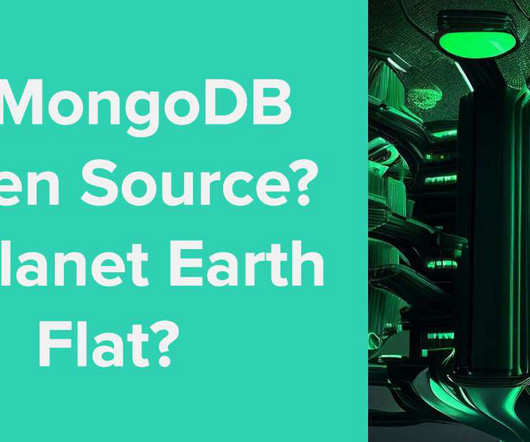Is MongoDB Open Source? Is Planet Earth Flat?
Percona
APRIL 12, 2023
They came up with a horizontally scalable NoSQL database. Instead of relational (SQL) databases defined primarily through a hierarchy of related sets via tables and columns, their non-relational structure used a system of collections and documents. 2016: The company adds service-loaded MongoDB Professional to its mix.












Let's personalize your content